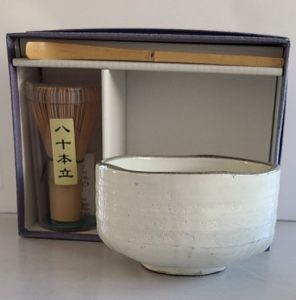News
2024.05.22
Columns
Kohiki:Ceramic Decoration Techniques that Give You a Wabi-Sabi Feel
Kohiki pottery is characterized by its warm and soft white color.
Konohiki vessels became the mainstream of tea ceremony bowls in the latter half of the 16th century (Azuchi-Momoyama period), when Wabicha began, and since then many masterpieces, mainly tea bowls and sake vessels, have been produced that are highly acclaimed.
In this column, we will introduce the characteristics of kohiki, the depth of the tea ceremony, and our products.
Table of Contents
1. What is Kohiki?
2. Features ① 3-Layer Structure
3. Features ② Gohon
4. Disadvantages of the Kohiki
5. Wabi-Sabi Joy of Growing Pottery
6. Himekohiki Matcha Bowl Set
What is Kohiki?
“Kohiki” is one of the decorative techniques for ceramics. It was created in Korea during the Joseon Dynasty of the Yi Dynasty, and is also called “Funseisaki”.
Generally, when a white powdery substance appears on the surface, it is expressed as “Kona wo Hiku” in Japanese, and this is the origin of the name of the technique “Kohiki”.
Features ① 3-Layer Structure
Kohiki is a technique in which a layer of white clay called “Shiro Kesho (white-coated)” is applied to the entire surface of the base clay, and then a transparent glaze is applied on top of that. While regular pottery has a two-layered structure of clay with glaze applied over it, Kohiki is unique in that it has a three-layered structure. Because it has three layers, it is thicker than other pottery, giving it a soft expression and taste. In addition, due to the Shiro Kesho, it has a warm and soft white color that is unique to earthenware.
▼Normal pottery (2-layer structure)
Clay + Glaze
▼Kohiki (3-layer structure)
Clay + Shiro Kesho + Glaze
Features ② Gohon
On the vessels done Shiro Kesho, pale scarlet (pale pink) spots often appear after they are taken out of the kiln. This is called gohon, and is a phenomenon caused by the iron content in the base material appearing on the surface due to reduction firing. It’s one of the profound atmosphere of Kohiki, but it’s can’t be controlled the intensity of the scarlet color. Sometimes it looks pinkish overall, and sometimes the gohon does not appear at all and the whiteness stands out. There are large individual differences depending on the vessel, and each vessel has its own individuality.
Disadvantages of the Kohiki
Although the Shiro Kesho gives the Kohiki a unique beauty, it does have some disadvantages due to its three-layer structure. Those are that it is prone to stains, mold, odors, and cracks.
Kohiki has high water absorption and easily absorbs water to the base clay. The absorbed water may evaporate and disappear over time, but because it has three layers, it is difficult to evaporate and water stains are easily formed. In addition to stains, mold and odor may remain.
In addition, the clay, Shiro Kesho, and glaze that make up Kohiki vessels have different expansion rates. Therefore, when heat is applied, such as by pouring warm water, they pull each other in different directions, which can cause the glaze to penetrate and cause cracks in the Shiro Kesho.
Wabi-Sabi: Joy of Growing Pottery
Although there are disadvantages as mentioned above, they can also be seen as beauty in the “Wabi-Sabi” that Sen no Rikyu valued in his tea ceremony during the Azuchi-Momoyama period in Japan. “Wabi-Sabi” is a uniquely Japanese aesthetic sense that embraces the beauty of simple things, old things, and withered things, and values that are ok with imperfections.
Kohiki has the disadvantage of being easily soiled, but rather than being pessimistic and discarding it as it gets older and dirtier, why not think of the change over time as “nurturing”? I believe that by accepting imperfection and loneliness, feeling the richness and depth within, and enjoying using it as a landscape, you will be able to feel the spirit of “wabi-sabi.”
Himekohiki Matcha Bowl Set

Finally, we would like to introduce the Kohiki products that we handle.
This product is a set of three items necessary for brewing matcha, a matcha bowl, a tea whisk (chasen), and a tea scoop (chashaku), so that you can easily enjoy matcha at home.
This matcha bowl is made of Mino ware, which has the highest domestic production share of 50% among Japanese pottery. Mino ware is a general term for ceramics produced in the Tono region in southern Gifu Prefecture, and is said to have a history of over 1,300 years. Known for its diverse designs and ease of use, it is popular both domestically and internationally.
The semi-cylindrical shape is stable and has a wide mouth, making it easy to handle, and its straight rim allowing you to enjoy the rustic texture of the bowl.
It was named “Himekobiki”. “Hime,” meaning of “Princess” in Japanese, represents an image from the outside that gives a sense of femininity and soothes the soul due to its subtle color.
Imoto Sangyo also handles a variety of other tableware, kitchenware, and miscellaneous goods.
If you are interested, please also check the “Goods & Cases” page.
If you would like to check the details of the product, please contact us from the ”Contact” page.
Category
Archive

